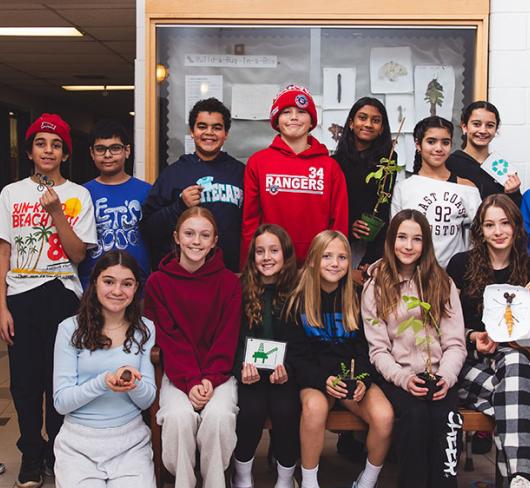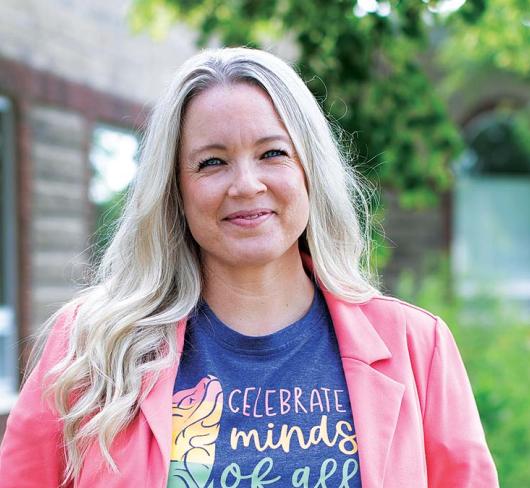
Photo by Christine Cousins
Embracing Pluralism: How an Anti-Racist and Anti-Islamophobia Curriculum Can Create an Inclusive Society
January 28, 2022 marked the fifth anniversary of the deadly attack on a Quebec City mosque and Canada’s first National Day of Action on Islamophobia. Six people lost their lives and 19 others were seriously injured during the terrorist attack at Le Centre Culturel Islamique de Québec in Sainte-Foy. January 28 is an important day for recognition and action on Islamophobia and all forms of discrimination. But the work of anti-racism, equity and pluralism goes beyond a day we mark each year. It must extend to our every day teaching practices.
My interest in an inclusive and pluralist classroom is based on personal and professional experience. I came to Canada as a Ugandan refugee in 1977. During my settlement and integration into my new home and community, I often experienced blatant racism based on my appearance and “lack of Canadian experience.” Through trials and tribulations, I was able to continue my education and get into teaching. As a teacher, I was always intrigued by the question: Why does the focus on Eurocentric curriculum continue over a multicentric approach in an age when more and more children entering our schools are from diverse cultures? My own Muslim faith is based on respect for human pluralism, and teaching about pluralism is part of who I am as an educator. Moreover, my participation in ETFO’s Project Overseas gave me an opportunity to return to Africa to learn and teach with my colleagues in Liberia, Ghana and Uganda. The benefits of Project Overseas are mutual as Canadian teachers and overseas participants work together to improve the quality of education worldwide. These enriching experiences confirmed my drive to make my classroom more inclusive and inspire the students to be proud of their culture and heritage.
During my primary practicum, I met Deepti. Every time I saw her, she was smiling. “Hi Deepti,” I would smile back. “Hi,” she would reply softly. She was a shy, quiet student and was reluctant to interact with other students or the teacher even during story time. I had also observed her shyness on the playground, where she often kept back from the rest of the kids. One day, I asked my host teacher if I could look at Deepti’s Ontario School Record. I was pleased to discover that she spoke Gujarati – my native language! When I met her the next morning at the door, I said, “Good morning Deepti, tun kem che (How are you?)” I will never forget her face – her eyes became wide and her smile broadened and she giggled and scampered off. That day, I also purposely chose the story, Anklet for a Princess, an Indian version of Cinderella, to read aloud to the students. All the children enjoyed the story, but I couldn’t help noticing a spark in Deepti’s eyes. The interesting difference in the story was that the heroine, Cinduri, at the stroke of midnight, loses her anklet as she rushes out of the palace. The next day, Deepti came running to me and proudly showed off her beautiful anklet. “Just like Cinduri’s,” she exclaimed. It was a great breakthrough! Deepti began to laugh a lot and her stories in her journal became longer, often with Gujarati words to describe her feelings.
As a student teacher, I learned an important lesson. I determined that when I had my own classroom, I would get to know my students and their cultures. I would take time to listen to all the voices in the classroom and I would include their stories in my read-alouds and classroom library. The skills necessary for teaching social justice would include teaching critical thinking and fostering a social consciousness amongst the students.
Educators have a responsibility to offer students multiple perspectives on world history. As a Muslim with a passionate interest in history, I have always wondered: Does it make sense to teach about medieval Europe and the “Dark Ages” and ignore the “Golden Age” of Islam in medieval Spain? The fall of the Roman Empire led to chaos in Western Europe but Muslim scholars began to study and preserve a lot of the important works of the Greco-Roman civilization. Muhammad, the Prophet of Islam (may peace be upon him) urged his followers to go as far as China in search of knowledge! It was inevitable that these discoveries and scholastic works impacted the European Renaissance. As a Grade 4 classroom teacher, I found my students were excited to learn about the castles and the jousting knights and the devastating plague. But I also discovered their fascination with Muslim Spain and the Fatimid state in Egypt.
One of the activities students enjoyed participating in was solving math problems using Roman and Arabic numerals. They quickly realized how much easier it was to use the Arabic numerals. Through research, they learned the Arabic numerals were adapted from Indian numbers. The Indian students immediately made the connection and felt proud of their culture and contribution. The students were in awe of the bazaars in Cordoba full of silks, fabrics, pottery, perfumes and spices from all over the world. They were immersed in the diversity of the architecture of castles, cathedrals, mosques, palaces with beautiful geometric patterns, gardens and fountains. One of their culminating tasks was to construct a medieval building to demonstrate their understanding of medieval society. Most of the students decided to build castles; however, with the knowledge of Muslim Spain, a few students began to plan a mosque, a palace and a caravanserai.
This unit was of special interest to the Muslim students in my classroom. Zain, a student who loved sharing interesting facts he picked up from his non-fiction reading and the Discovery channel, was delighted when I met him at the door the first day of school and greeted him with “Asalaam alaikum,” the Arabic greeting for Muslims meaning “may you be blessed with peace.” My own interest in Muslim Spain encouraged him because it, once again, reminded him of the rich heritage of his ancestors. I was absolutely delighted when he approached me and asked if he could use the draw bridge (constructed in our science unit on pulleys and gears) in a mosque instead of a castle. Zain and his friend, Anthony, were proud to share their unique structures of a mosque in Granada and a cathedral in Madrid.
Our classrooms today are a microcosm of the world, its issues and its history. In a pluralistic classroom of many diverse faiths and cultures, teaching all subjects through a culturally relevant and responsive lens encourages understanding and appreciation of different cultures and faiths and teaches students to be engaged, knowledgeable global citizens. In October, we celebrated Islamic Heritage month. How many educators and parents took time to teach and talk about a civilization and culture of over a billion people who continue to be stereotyped and misrepresented? The future will belong to students educated in inclusive and pluralistic classrooms and homes. These students will be enriched with critical thinking skills to debate the cultural hegemony of an exclusive curriculum and become leaders and owners of a more progressive and inclusive global society.
Shamim Murji is a member of the Peel Occasional Teacher Local.

